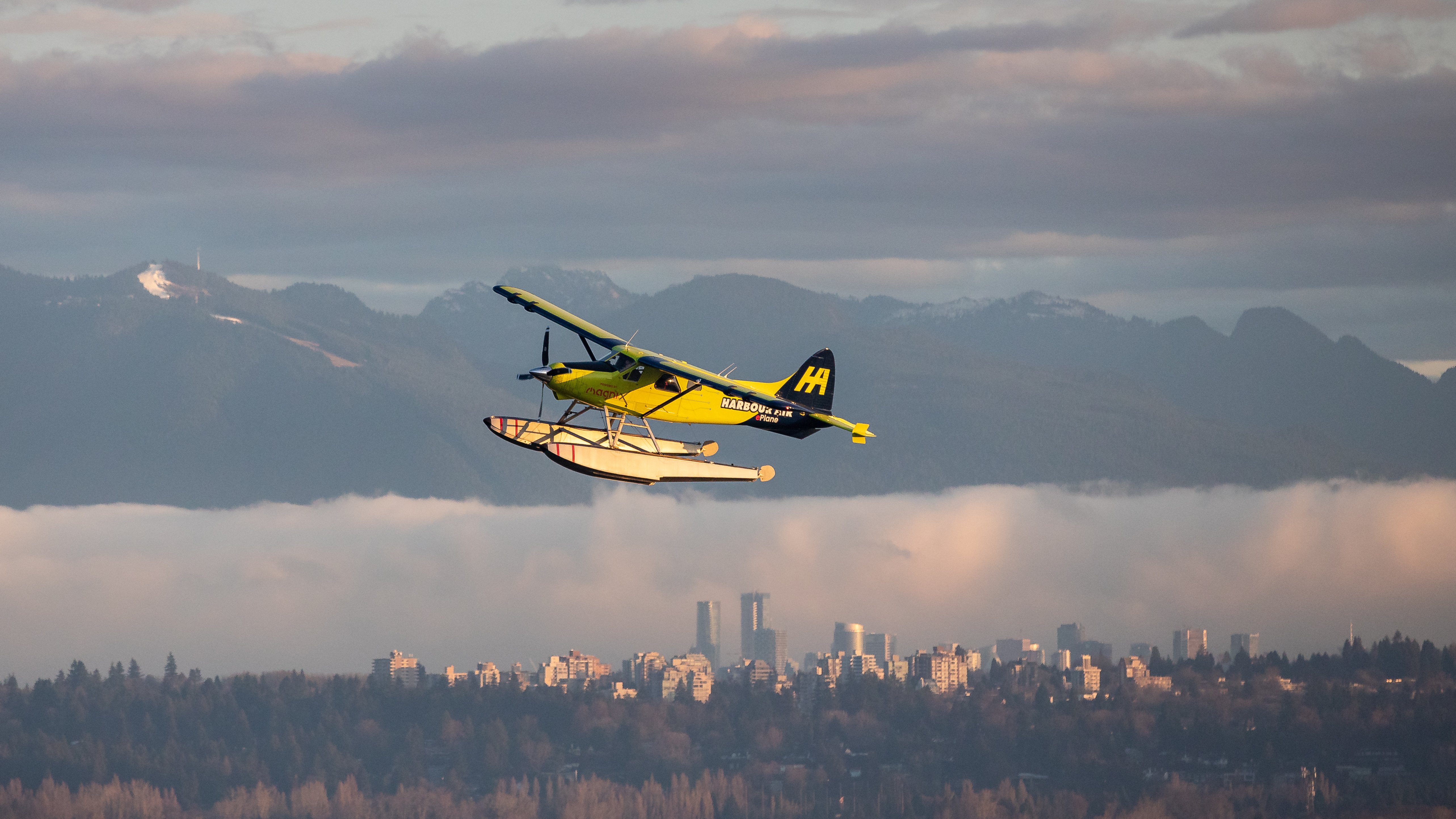Click Here to View This Page on Production Frontend
Click Here to Export Node Content
Click Here to View Printer-Friendly Version (Raw Backend)
Note: front-end display has links to styled print versions.
Content Node ID: 419686
Canadian seaplane operator Harbour Air for the first time flew its electrically powered De Havilland Beaver prototype aircraft on a point-to-point test flight this week. In an August 18 statement, the airline reported that the eBeaver flew 45 miles in 24 minutes between Vancouver and Victoria on Canada's Pacific coast.
The aircraft, which was retrofitted with MagniX's in-development electric propulsion system in 2019, left Harbour Air’s terminal on the Fraser River adjacent to Vancouver International Airport and landed in Pat Bay, adjacent to Victoria International Airport. The eBeaver will stay in Victoria to support Harbour Air’s partnership with the BC Aviation Museum, which plans to hold an open house on August 20, before returning to Harbour Air’s maintenance facility at Vancouver International.
Unfortunately for Harbour Air's plans to electrify some of its commuter fleet, supply chain disruptions continue to hinder the program’s certification effort. Plans call for a second eBeaver, expected to fly with a new Magni500 motor with MagniX and a new battery pack from Switzerland’s H55, would serve to secure the required supplemental type certificate and become the first airplane to enter commercial service.
Speaking with FutureFlight following the milestone flight to Victoria, Harbour Air CEO Greg McDougall said he expected new motors—one for a ground-test vehicle and another for the second flying airplane—to arrive by the end of the year, allowing for first flight by the second quarter of next year.
Just as significantly, a new battery pack will replace a unit used in the first eBeaver that McDougall described as “not state-of-the-art.” Designed for safety rather than range, it uses a heavy thermal runaway fire suppression system, meaning the airplane now flies at maximum gross weight with just a pilot on board. The new motor and a new battery pack combination will allow the airplane to carry three passengers and a pilot.
McDougall called the new motor from MagniX more compatible with a small aircraft than the one that powers the first prototype. In fact, Harbour Air derated the one now in flight testing from 750 horsepower by roughly half, meaning the Beaver carries more weight with it than necessary, he explained.
Unfortunately, MagniX has encountered the same supply chain disruptions as Harbour Air and the battery supplier have experienced.
“We can’t do anything without the motor and the battery pack,” said McDougall in an interview with AIN in May. “I’m just the guy at the end of the line here that’s getting the dates pushed, but the actual details of exactly what the issues are and exactly what things they can’t get I’m not fully cognizant of. But I do know that’s what’s slowing us down. We’re gung-ho here; we have the funding; we have the people; we have everything. We’re ready to go.”
